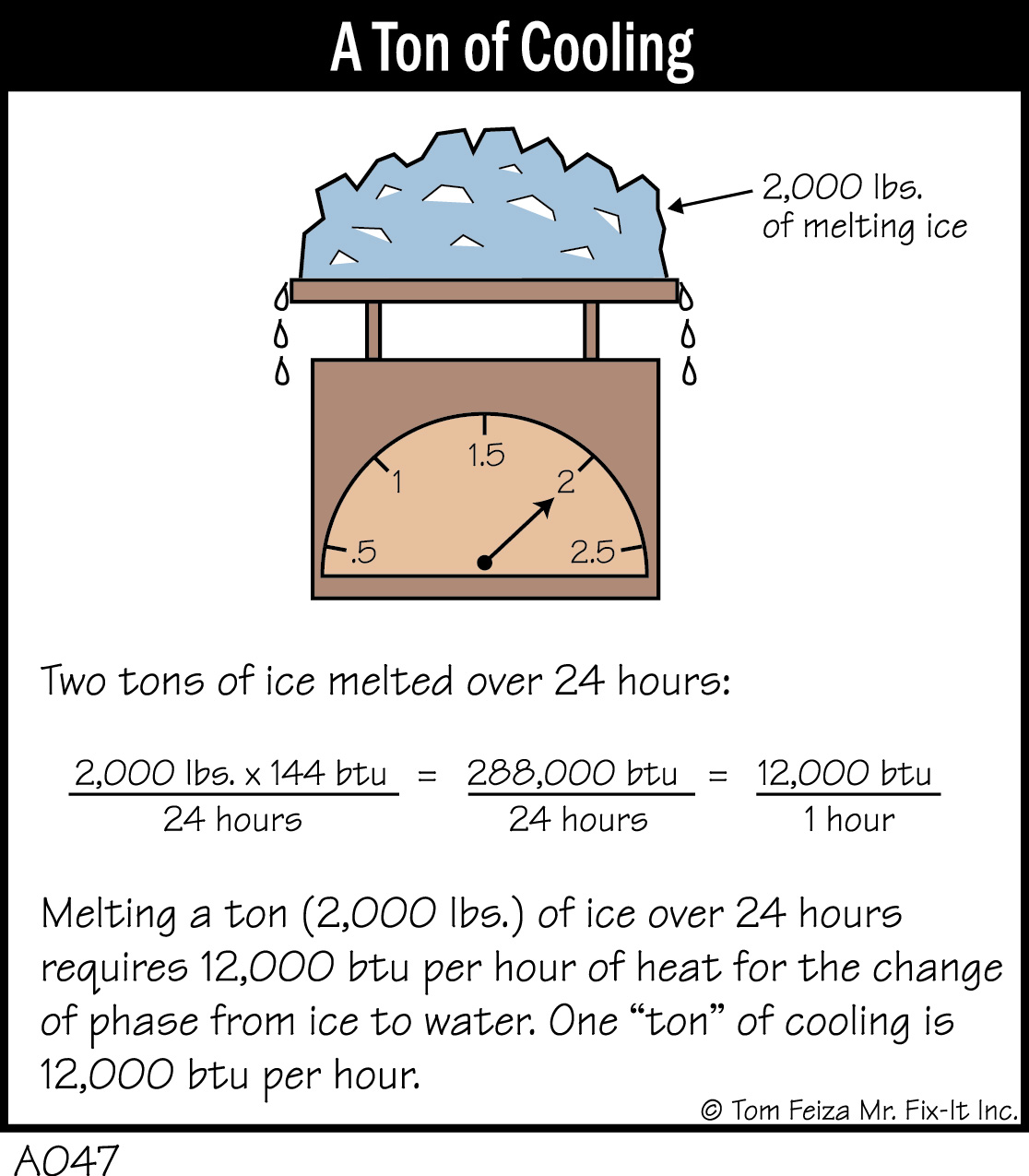Ever hear of a two- or three-ton central air conditioner? Does that mean a two-ton air conditioner weighs 4,000 pounds? Is the term related to cooling capacity, or is it a random term that tech folks use to impress us?
When engineer Joe Cool (at least I think “cool” was part of his name ) developed the standards for measuring mechanical cooling, ice was commonly used for cooling. You know, in the old days, food was stored in the ice cooler, and there was no air conditioning. So Joe decided that the cooling capacity measurement should relate to ice.
A standard was set equating one “ton” of cooling to the amount of energy needed to melt one ton (2,000 lbs.) of ice over a 24-hour period. For tech folks: the exact figure is 12,000 btu per hour.
So what is a btu? It stands for British thermal unit, and we will cover that detail in another tip. Just remember: one ton of cooling equals melting one ton of ice in 24 hours – 12,000 btu per hour.
To put it another way, the change of phase from ice to water requires 144 btu per pound or 288,000 btu per 2,000 pounds.


